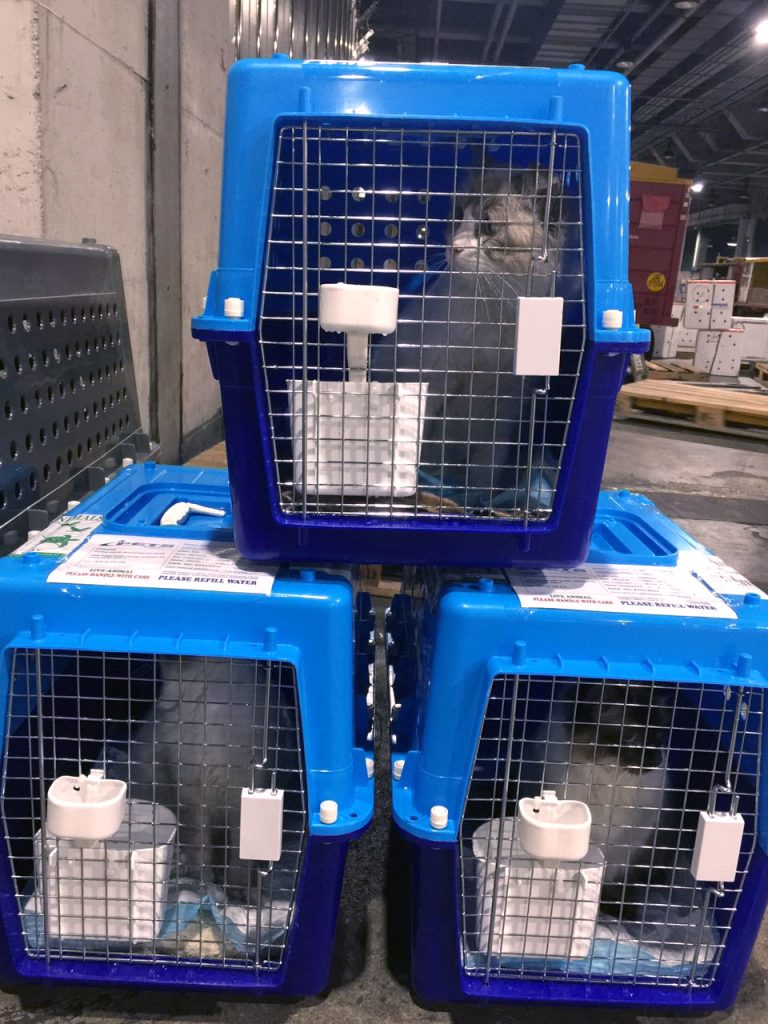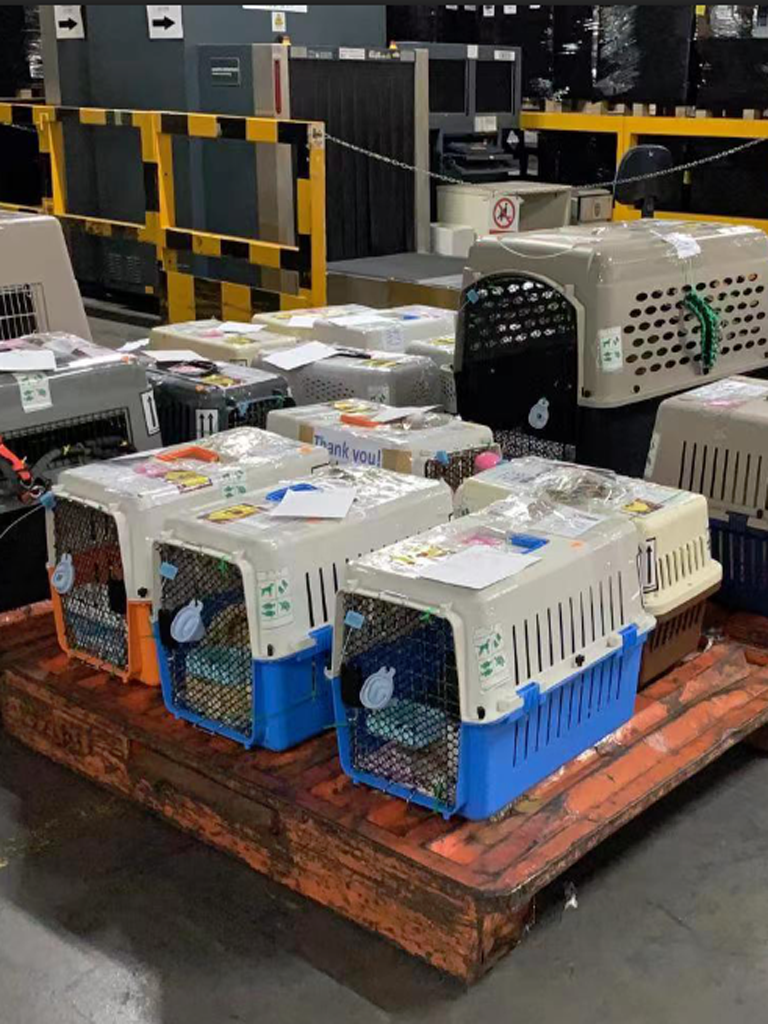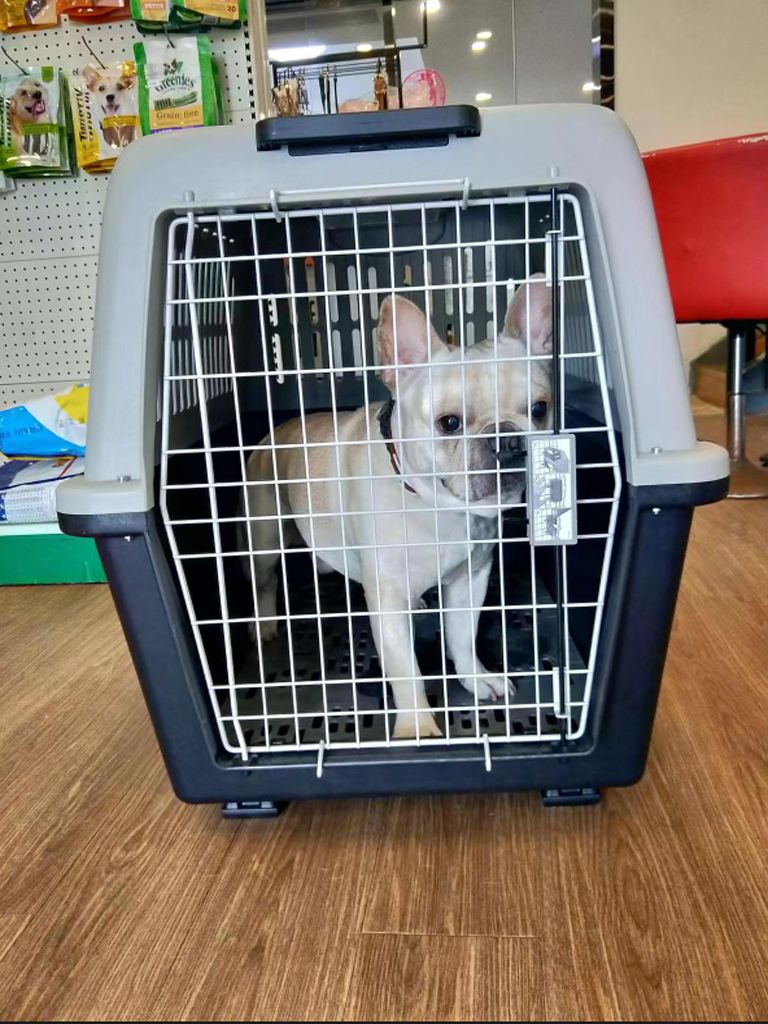EXPORT
Pet immigration services
Pet Immigration is the process of relocating animals from one country to the other country. Each country has their own different import requirements, and the World Health Organization (WHO) has specific import requirements for each country. As you already know, Hong Kong is a low-risk-rabies country, which means all countries welcome pets from Hong Kong to their country.
Pet immigration has become more and more popular in the past few years. The transportation industry has become more developed, and more people have the opportunity of having their pets immigrate to other countries, such as the United Kingdom (UK) and Australia (AU). In today’s busy world, many companies are sending their employees to other countries and are allowing them to take their pets with them. Our pet immigration company has helped thousands of pet lovers, just like you, over the past 8 years. The industry has spawned many pet immigration companies over the past few years, and the price of such services can vary greatly.








What should I look out for during the process?
There are many reasons behind this price fluctuation and one of the most common reasons is that they outsource to other experienced pet immigration companies after receiving the order, which in turn will result in higher prices and overall costs. In the past, our company mainly helped other pet immigration companies with documents, airline reservations, and foreign contact locations. Recently, our company has decided not to accept orders from other pet immigration companies anymore and started to work directly with pet owners.
Because of the advancement of technologies, information is more readily available and pet immigration is no longer such a daunting task as it once was. No matter what countries you want your pet to immigrate to, be it the United Kingdom or Australia, there is plenty of information available online. Keep in mind that pet immigration is not just about transporting your beloved pet(s) from one country to the other country, the issues you have to consider are very complex and professional. For example, how long in advance should I arrange for my pet to immigrate to other countries? Can I fly to other countries with my pet during the process? The rabies shot is valid for three years, but the destination country requires that the rabies shot should not exceed one year. In the following, we will give some examples of the import requirements of several popular countries for your reference.
Pet immigration to the United Kingdom (UK) & Australia (AU)
Pet immigration to the United Kingdom (UK):
Pet immigration to the UK has been a very popular destination for the past two years. According to official data, more than 400,000 people have already immigrated to the UK in the past two years. Our company has helped more than 200 families to successfully immigrate their pets to the UK. However, what should we pay attention to when immigrating to the UK with pets?
First of all, pet immigration to the UK should prepare for rabies injection. The date of rabies injection should be more than 30 days at the time of departure but not more than one year. Find the airline that suits you two months before departure, and find the British pet immigration company after finding the airline for customs clearance. After that, you will need to prepare a suitable travel kennel for your pet, take the pet to an officially recognized veterinary clinic within ten days before departure, and arrange to fill in the official British health certificate, then have the Hong Kong Agriculture, Fisheries and Conservation Department sign it.
In addition, for pet immigration to the UK, you can choose to fly from Hong Kong to London or Manchester Airport. The following is the official UK pet entry requirements for reference: http://www.defra.gov.uk/.
Pet immigrant to Australia (AU):
Most people who immigrate to Australia with pets choose to do so mainly because they yearn for their unique weather, vast plains, abundant wild animals and resources. Moving to Australia is definitely one of the best countries for pet immigration. The time needed to arrange pet immigration to Australia takes at least seven months and is the most complicated process. Below, we will briefly explain the basic requirements for general pet immigration to Australia to prepare everyone.
Pets immigrating to Australia must first have a rabies shot, wait 30 days, and then take a rabies titer test. After receiving the test report, you can apply for the Australia import permit after all documents are signed by the Hong Kong AFCD Department. After receiving the Australian Import Permit, you can arrange to apply for the Australia 10-day quarantine space, then you can start booking the airline that suits you. If the pet immigrating to Australia is a canine, a second blood test is required within 45 days before departure (not for cats). The content of the second blood test will be provided below for your reference. The types of blood tests are generally provided by veterinarians who are authorized by the Hong Kong AFCD Department. In addition, before flying, pay attention to do a good job on tapeworm treatment for your pets. The following are the official Australia pet import regulations for your reference: http://www.agriculture.gov.au/

Pet immigration prices:
Many people are concerned how much it will cost to immigrate their pet to other countries. In fact, each country has different import requirements, so the cost of pet immigration can be different. But overall, the pet immigration price will be calculated based on the following necessary entry requirements.
Factors that can affect pet immigration prices:
- Rabies vaccine is one of the core requirements for all countries’ entry policies. Some countries require one rabies shot while some countries may require two. If the rabies vaccine has expired, your pet must be re-injected and wait for 30 days before departure. Rabies vaccines typically cost about $80-$180.
- Annual vaccines, some of the annual vaccines valid for one month and some of them are for one year. If the vaccine is valid for one month, our pet immigration company recommends at least two injections before going abroad. If the vaccine is valid for one year, it will be enough to meet the requirements for many countries. General vaccination fees range from $300 to $600.
- Rabies titer test, generally costs about $3500. Rabies titer test is only required in a few countries, such as Australia, New Zealand, Singapore, Indonesia, etc. It usually takes one month to receive a report from the lab.
- It usually costs about $1,000 for internal and external pest control. But not every country needs to do internal and external pest control. Dubai, Australia, New Zealand, the United Kingdom and other countries require internal and external pest control.
- Air freight: Each airline charges differently and depends on the size of the travel kennel to determine the air freight fee. It can cost several thousand, or up to 10 thousand dollars.
In conclusion, the pet immigration price is very dependent on which country your pet is immigrating to. You can directly WhatsApp us at +852 6505 9519 for more information, and we will provide you with details for your reference.

What is the difference between cat and dog immigration?
Generally speaking, the requirements for cat and dog immigration are the same in each country, but pay attention to the different vaccinations for both. In addition, when a cat is immigrating to Australia and New Zealand, it does not need additional blood tests, only a rabies titer test is required for cats. On the other hand, with dogs immigrating to Australia or New Zealand, it requires more blood tests to enter the country. Generally speaking, the procedures required for cat immigration are simpler than dog immigration.
What’s more, the cat’s skin is thicker than that of a dog’s and cats’ claws can be very sharp. Sometimes, there is a certain degree of danger involved in the process of implanting microchips into cats. Therefore, for cat immigration, we recommend that the owner bring the cat soft bag together with the pet clinic for microchips and all vaccinations. Our pet immigration company does not require owners to accompany the clinic for dog immigration, but of course, dog owners are welcome to come and check in on the process.
Key points for cat immigration:
Most cats are rather timid. Generally, they will not eat and drink water when they arrive in a new environment. Personally, for pet immigration we recommend arranging a suitable travel kennel or soft bag for your cat a few months before departure to help it get used to it. After arriving at the destination, it helps the cat adapt to the new environment by placing the same travel kennel or soft bag. There are also many products on the market for cats to help reduce their fear.
Key points for dog immigration:
Pet immigration concerning dogs generally means paying attention to whether your new home allows dogs to live there. Check the local regulations, the length of the dog leash and whether it is necessary to wear a mask when you walk your dog outside. Be sure to check to see if you need to apply for a local dog license when you arrive at your destination.




































